merry christmas everyone! ⋆。°✩
I watched Little Women (2019) for the first time in cinema a day before the covid-epidemic hit in my country and suddenly my life changed (I think I can say it) for good. I went from following classes and studying in a city I loved, meeting up with friends and classmates every now and then, going to the cinema and looking to the future with an optimistic and carefree view, to a life bound inside my room and limited to no contacts except my family. Online became a reality on its own, spending days and days behind my laptop, my little window to the world. Even though my actual world was as small as it has ever been. I was lucky to have my studies to lose myself in and forget the awful things that were happening. At first I didn’t really realize it, but somehow life felt different. Everything had changed, and Jo’s words came back to me.
I miss everything.
Again when I graduated, I whispered these words with her as they appeared on the screen. Childhood was really over, I was an adult. An adult no longer within the walls of an institution that keeps you a young adult for a while, with little responsibilities, no pressure to move out or have a job lined up. But then that was over and I had to move on from doing something I loved to… To what, exactly, I didn’t know. I hated the not knowing and was sure that whatever I was going to do next wasn’t going to be as fun as it had been to study.
I think it took me a while to get excited about the future again after covid. Because of the many restrictions, and often the lifted restrictions coming back and causing you to cancel any plans you tried to make, I got into the habit of not dreaming, of tempering my expectations, of thinking in small steps. I had to break with this when I had to think about my future, and gain back the naive thought that the world was at my feet. That I was the author of my own life, and especially of this new chapter after graduation.
Louisa May Alcott wrote about her own life and that of her sisters and created a book called ‘Little Women’. The story follows the four sisters Jo, Amy, Meg, and Beth from the March family as they come of age in America during the Civil War. Her book turned out to be a success because Jo was a freethinking and flawed person rather than the feminine stereotype that was favored in literature until then. Even more than a century later, this story is still read, adapted, and enjoyed by many. I can still resonate with Jo’s struggle to break free from longing to return to a golden childhood and into a world where you have to stand on your own two feet without really knowing where you are going.
Since its publication, this story has been adapted to film 7 times. Whereas earlier retellings of the book did not bother to break with the original, the 1994 version directed by Gillian Armstrong makes a distinct change that brings the notion of authorship to the foreground: Jo as the narrator of the story, telling it through voice-over. This changes the third-person perspective into a subjective first-person account of the events. This subjectivity establishes Jo’s authorship and signifies Jo’s agency over what is told and seen. Moreover, in the 1933 and 1949 adaptations, Jo does not publish the book Little Women itself, but a story named “My Beth”. By contrast, her work is called Little Women in the 1994 adaptation, making it her story that we as viewers are watching. The gap between Jo and Alcott is closed even further, almost making the movie biographical.
However, the 1994 adaptation does not escape an old-fashioned (patriarchal) ending, because it does not break away from the pursuit of love and marriage. Though Jo writes the book in the 1994 film, it is only Professor Bhaer who can have her book published. This leads to their reunion and “happy ending”, redirecting the plot to the ending of the source text. Marriage, so it seems, still functions as the only happy ending for our literary heroine, even in the ‘90s. Moreover, Bhaer is still the driving force behind the publishing of the book, which takes away Jo’s agency and erodes Jo’s authorship.
In 2019, Gerwig brought her recreation and reinterpretation of this story to the big screen. She kept the element Gillian added in 1994, adding the notion that Jo is the author of the book she writes in the movie, integrating the source text into the adaptation just like its predecessor. However, adaptations are seldom identical to their source as to their predecessors and with the first sentence of the film, Gerwig immediately seems to comment on the previous version, opening with the quote spoken by the publisher Mr. Dashwood: “If the main character is a girl, make sure she’s married by the end. Or dead.” It criticizes the notion of marriage or death as the only two options for a female character to have a “happy” ending.
In the first scene of the film, Jo tries to get a short story published in the local newspaper. This is when the publisher tells her: “If the main character is a girl, make sure she’s married by the end. Or dead.” When approaching the end of the movie, Beth has died, Amy and Meg are married, but Jo is neither married nor dead. This leaves the question: What will it be for Jo? This question is answered by an ambiguity created by the plot ordering. The ending shows how Jo runs after Professor Bhaer, whom she met at a boarding house in New York where they were both employed. She hurries to catch him before he takes a train that takes him to the other side of the country. However, before this is resolved, there is a cut to a scene at the publishing company, where Jo is asked by her publisher whom the protagonist of her book Little Women marries. Jo answers she doesn’t marry either of them, not the neighbor Laurie with whom the protagonist was childhood friends, nor the professor. The publisher says it won’t be worth publishing if she doesn’t end the book with her marrying, because it will not sell. Jo concedes, and as she does, we cut back to the scene where Jo rushes to the train station to find Bhaer. She finds him in time and tells him she doesn’t want him to leave. The scene ends with a kiss before we cut back to the publisher again. We get both the “happy” ending from the book and an alternative in which Jo does not rely on a man to fulfill her dreams, an interpretation more in line with contemporary feminist values.
“I’ve had lots of troubles, so I write jolly tales.”
- Louisa May Alcott
By explicitly adding the process of editing the manuscript and the role of the author, which are both implicit when reading the source text, and by foregrounding the process of editing through montage, it is now up to the viewer to decide what happens and how the story ends. It favors the interpretation that Jo (and thus Alcott) has made up the ending for the sake of the publisher, even though a viewer might believe what is shown after the scene with the publisher. It makes explicit an implicit feature of the source text and plays with the process of interpretation. This deviation from the source text both honors and criticizes the ending of the original. This change allows us to become critics ourselves, asking us to look differently at this work of fiction and the role of the author as she might have made choices for economic gain and conveys the feminist message that a happy ending does not have to include a husband. By criticizing, this retelling thus places the work in a contemporary context.
Throughout the whole film, Gerwig establishes Jo’s agency and authorial voice by adding non-linearity. The film uses visual means to subtly denote that this is Jo’s story, and she is the one who tells it. The most apparent difference between source text and adaptation is the ordering of events. Instead of a chronological plot, the 2019 adaptation merges the two volumes that make up Little Women and Good Wives. This second volume tells the story of the March sisters as they are older and shows the ‘answer’ to their troubles and choices in the first volume. Gerwig took the creative decision to intertwine the two, creating two timelines that interweave as indicated in the script (below).
These two different timelines can be distinguished because of their distinct colour grading. This past timeline has been given a brownish, golden filter to reflect the way Jo looks back on her ‘golden’ childhood. When the present re-enters, this is a more blue, realistic filter that contrasts with the way she will describe their childhood in her book Little Women. It is one of the ways Gerwig establishes her own authorial influence on the story and reiterates how much Jo misses the way things were.
The final scene, set a few years after Jo has reunited with Bhaer/published her own book, is in a similar filter as the scenes from her childhood. Could this be the message Gerwig tries to tell, that the things we miss from childhood will return to us in different ways? That the future can colour as golden as our childhoods?
Or is this another way of hinting at the fictional nature of the scenes, a dreamed-up happy ending for the sake of commercial needs?
I favour the first interpretation, showing us that there is much to look forward to, and that endings can lead to new beginnings, and golden-hued in-betweens, even if you don’t know where you’re going… Especially because you don’t know where you’re going.


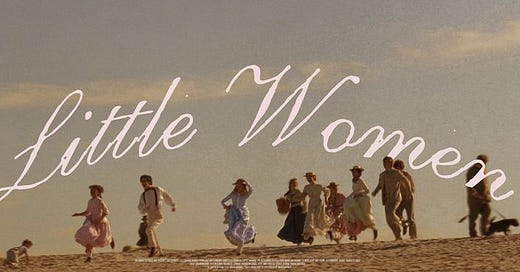



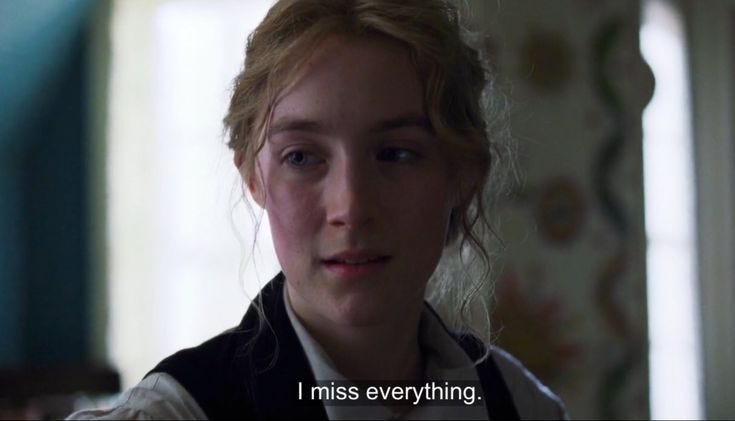
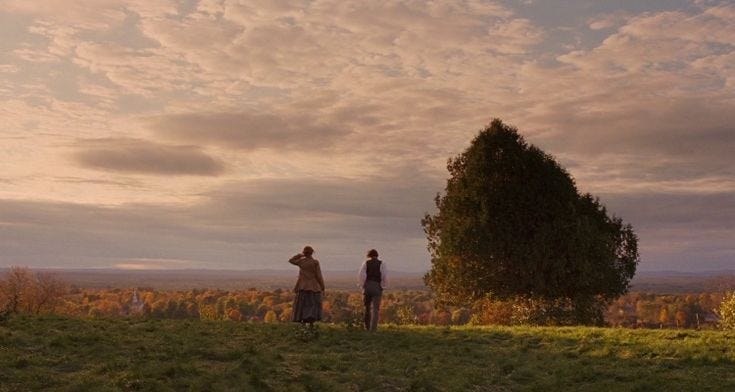
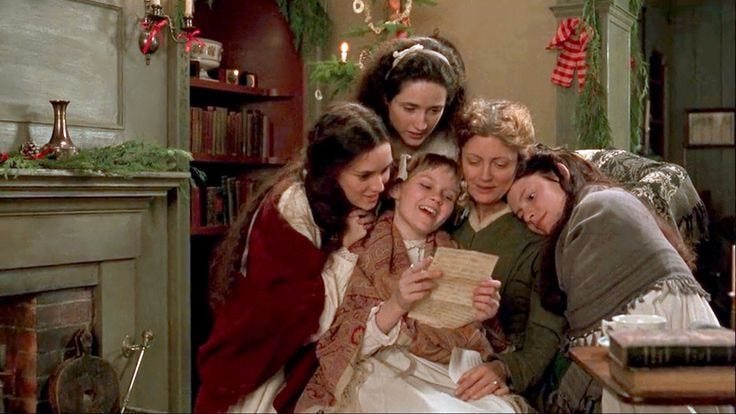
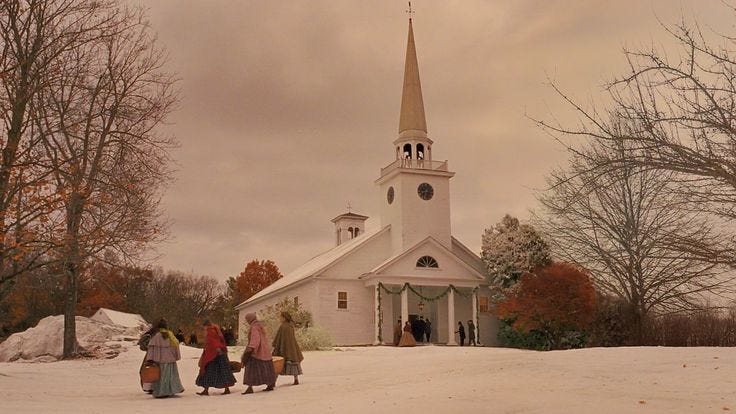



i adore this movie and i adore this post so much
As a fellow Little Women enjoyer, this is one of my favourite posts I've read in a while!